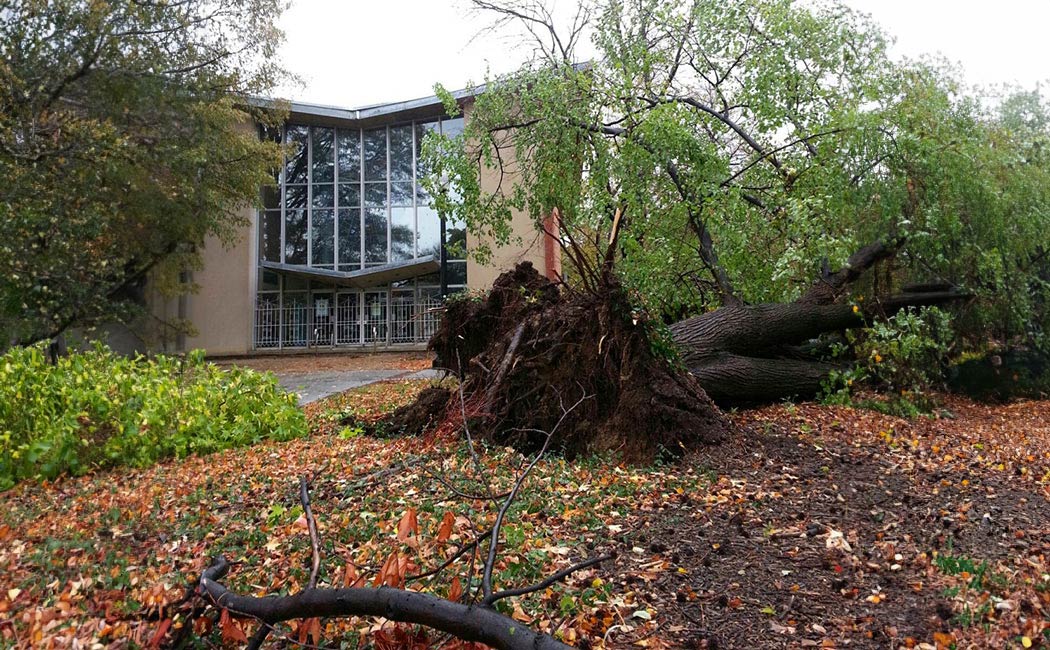Preparing trees for Arizona monsoons is crucial to minimize damage and ensure the health and stability of your trees during the intense storms. Here are some steps and tips to help you get your trees ready:
1. Regular Pruning and Trimming
- Remove Deadwood: Eliminate dead, diseased, or damaged branches. Deadwood is more likely to break during a storm.
- Thin the Canopy: Reducing the density of the tree canopy allows wind to pass through more easily, decreasing the likelihood of branches breaking.
- Shape the Tree: Proper pruning to shape the tree can improve its structural integrity. Avoid topping trees, as this can create weak points.
2. Inspect for Structural Issues
- Look for Weak Branches: Identify and address weak or V-shaped branch unions which are prone to breaking.
- Check for Root Problems: Ensure the tree has a stable root system. Look for signs of root rot, upheaval, or other issues that could affect stability.
3. Cabling and Bracing
- Support Weak Limbs: Use cables and braces to support weak branches and limbs, providing extra stability during high winds.
4. Watering and Mulching
- Deep Watering: Ensure trees are well-hydrated, as drought-stressed trees are more susceptible to damage.
- Mulching: Apply mulch around the base of the tree to retain moisture and protect roots. Avoid piling mulch against the trunk, as this can lead to rot.
5. Soil Care
- Aerate Soil: Compacted soil can stress tree roots. Aerate the soil around trees to improve root growth and stability.
- Proper Fertilization: Provide necessary nutrients to maintain tree health, but avoid over-fertilizing which can lead to weak, rapid growth.
6. Remove Hazardous Trees
- Assess Tree Health: If a tree is in poor health or structurally unsound, consider removing it to prevent potential damage to property or other trees.
- Professional Assessment: Hire an arborist to evaluate questionable trees and recommend removal if necessary.
7. Wind Barriers and Protection
- Temporary Wind Barriers: Install temporary windbreaks or barriers around young or newly planted trees to shield them from intense winds.
- Staking Young Trees: Properly stake young trees to provide support, but ensure stakes are not left on too long as this can inhibit natural root and trunk development.
8. Clean-Up and Maintenance
- Debris Removal: Regularly remove fallen leaves, branches, and other debris around the base of trees to prevent disease and pest infestations.
- Inspect After Storms: After each monsoon, inspect your trees for damage and address issues promptly to prevent further harm.
Proper preparation and regular maintenance can significantly reduce the risk of tree damage during Arizona’s monsoon season. Regular pruning, structural assessments, proper watering, and timely interventions like cabling or staking are essential. Consulting with a professional arborist can provide additional insights and tailored recommendations to ensure your trees remain healthy and resilient during storm season.
Get A Palm Tree Trimming or Removal Quote In Phoenix, AZ
If you are interested in receiving a free cost quote for Palm Tree Trimming anywhere in the Phoenix Valley, let Arbor Care Help!
We provide affordable Palm Tree Trimming services in Phoenix, Scottsdale, Chandler, Scottsdale, Gilbert, Glendale, Mesa, among others. Remove those sick or dead Palm Trees and enhance your residential yard or commercial property.






